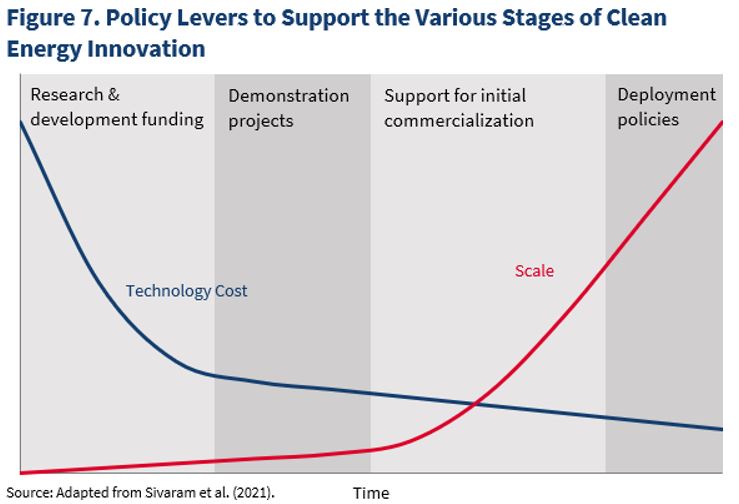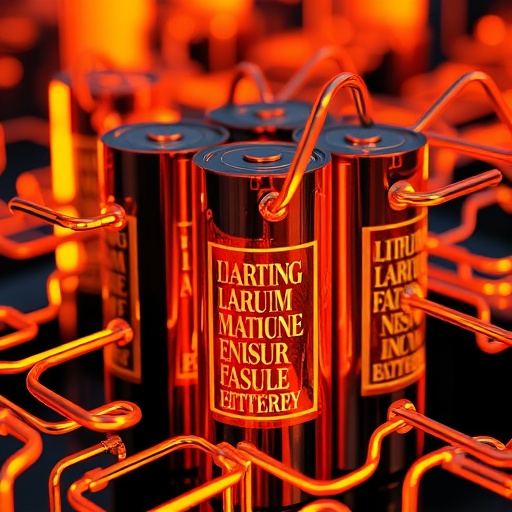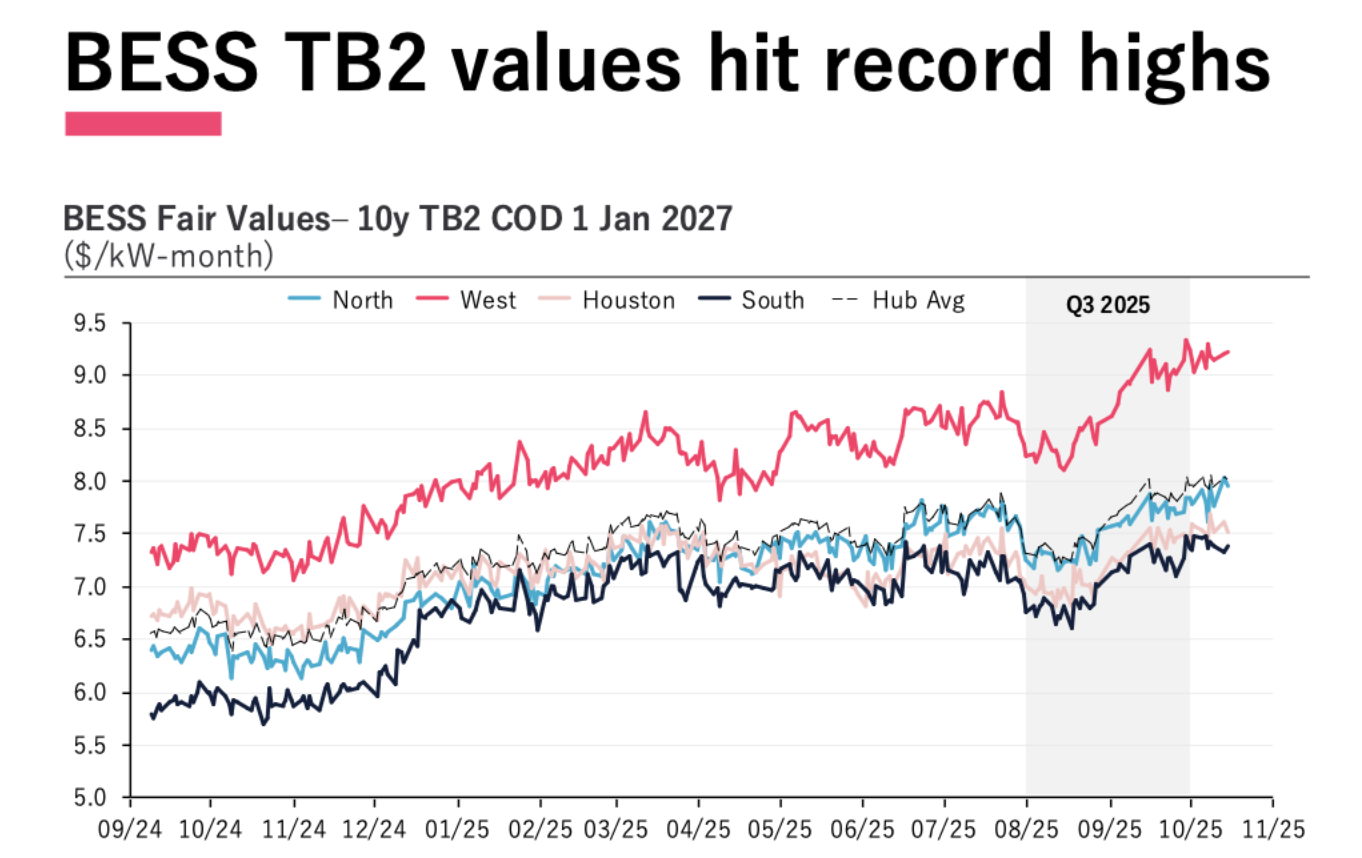Clean Energy Is Still the Cheapest Energy. States Must Deploy It, Fast. – Evergreen Action

Report on State-Level Strategies for Clean Energy Deployment and Sustainable Development Goal (SDG) Advancement
This report outlines key actions that state governments can implement to accelerate the deployment of clean energy. These strategies are critical for making substantive progress toward several United Nations Sustainable Development Goals (SDGs), particularly SDG 7 (Affordable and Clean Energy), SDG 13 (Climate Action), SDG 9 (Industry, Innovation, and Infrastructure), and SDG 8 (Decent Work and Economic Growth).
Immediate Actions to Accelerate Progress on SDGs
States can take four immediate, high-impact actions to overcome barriers and expedite the transition to a clean energy economy, thereby contributing directly to global sustainability targets.
1. Enhance Inter-Agency Coordination to Support Sustainable Infrastructure (SDG 9, SDG 17)
Effective governance and partnership are foundational to achieving the SDGs. States should establish dedicated task forces to streamline the complex regulatory and administrative processes involved in clean energy deployment.
- Convene Cross-Agency Task Forces: Governors can create centralized teams, similar to New York’s model within NYSERDA, to help commercial projects navigate permitting and regulatory hurdles, ensuring the rapid development of infrastructure required for SDG 9.
- Provide Public Guidance for Consumers: State agencies should issue clear, accessible guidance for individuals to utilize consumer tax credits for residential solar and electric vehicles. This promotes affordable clean energy access (SDG 7) and fosters sustainable communities (SDG 11).
2. Fast-Track Renewable Energy Procurement (SDG 7, SDG 13)
To meet the urgency of the climate crisis (SDG 13) and increase the share of renewables in the energy mix (SDG 7), states must accelerate their procurement timelines.
- Expedite Project Proposals: Following the example of Maine, states can set aggressive deadlines for renewable energy developers to submit proposals, particularly for projects on underutilized or contaminated land (brownfields), which supports land rehabilitation and sustainable urban development (SDG 11).
- Utilize Emergency Legislation: Where possible, state legislatures should enact bills with emergency provisions to allow clean energy policies to take immediate effect, bypassing standard legislative delays and fast-tracking climate action.
3. Streamline Siting and Permitting for Clean Energy Projects (SDG 7, SDG 9)
Reducing administrative barriers is essential for the timely construction of clean energy infrastructure. Streamlining these processes directly supports the innovation and infrastructure goals of SDG 9 and accelerates the availability of clean energy under SDG 7.
- Leverage Existing Authorities: Governors should use executive authority to reduce state-level review requirements for solar and wind projects where appropriate.
- Implement “Shot Clocks”: States can introduce mandated timelines, or “shot clocks,” that require permitting decisions for renewable energy projects within an expedited timeframe, preventing unnecessary delays.
4. Modernize Grid Interconnection and Clear Project Backlogs (SDG 7, SDG 9)
A significant barrier to clean energy deployment is the long queue for new projects to connect to the electricity grid. Addressing this bottleneck is a critical step in modernizing energy infrastructure (SDG 9) and enabling a transition to clean energy (SDG 7).
- Pressure Regional Transmission Organizations (RTOs): State leaders, like Pennsylvania’s governor, should use their influence to press RTOs to implement interconnection reforms and speed up their review processes, which can take an average of five years.
- Prioritize Clean Energy Projects: Given that the vast majority of the over 11,000 projects currently in interconnection queues are clean energy, states must advocate for these projects to be prioritized, clearing the way for a massive increase in renewable energy capacity.
Laying the Groundwork for Long-Term Sustainability
Foundational Policies for Sustained Progress on SDGs
While immediate actions are crucial, states must also implement long-term policies to create a durable clean energy economy. These efforts will establish the necessary foundation for achieving climate goals and reducing costs.
- Promote Innovative Land Use: Unlocking brownfields for solar development contributes to SDG 11 and SDG 7.
- Invest in Energy Storage: Boosting battery storage capacity is vital for grid stability and ensuring a reliable supply of renewable energy (SDG 7, SDG 9).
- Reform Utility Incentives: Working with Public Utility Commissions to revamp utility incentive structures can align their business models with climate and clean energy goals (SDG 13, SDG 7).
State Leadership and the Co-Benefits for Sustainable Development
State leadership in deploying clean energy offers a win-win scenario, delivering on multiple SDGs simultaneously. Solar and wind remain the most affordable and rapidly deployable energy sources, providing a clear economic case for action.
- Economic Growth and Decent Work (SDG 8): The clean energy transition creates good-paying jobs and attracts future-focused industries.
- Affordable Energy and Poverty Reduction (SDG 7, SDG 1): Deploying low-cost renewables helps keep household energy bills affordable, a key component of poverty reduction.
- Climate Action and Resilient Communities (SDG 13, SDG 11): A shift to clean energy directly reduces climate pollution and helps communities adapt to climate impacts like extreme heat and flooding.
- Health and Well-being (SDG 3): Moving away from fossil fuel infrastructure reduces harmful air pollution, leading to improved public health outcomes.
Which SDGs are addressed or connected to the issues highlighted in the article?
- SDG 7: Affordable and Clean Energy – The article’s primary focus is on deploying clean energy sources like solar and wind, making them accessible and affordable for households.
- SDG 13: Climate Action – The text explicitly links clean energy deployment to tackling climate change, reducing climate pollution, and mitigating the impacts of climate-fueled extreme weather events like flooding and heatwaves.
- SDG 8: Decent Work and Economic Growth – The article mentions that deploying solar and wind energy will create “good-paying jobs in a clean energy economy” and attract new industries.
- SDG 9: Industry, Innovation, and Infrastructure – The discussion revolves around building new energy infrastructure, upgrading the electricity grid, and overcoming systemic hurdles like interconnection queues and permitting processes.
- SDG 11: Sustainable Cities and Communities – The article touches on making energy bills more affordable for households and promoting sustainable land use by developing clean energy projects on contaminated land (brownfields).
- SDG 17: Partnerships for the Goals – The text emphasizes the need for collaboration and coordination among various stakeholders, including state agencies, governors, legislatures, local utilities, and Regional Transmission Organizations (RTOs), to achieve clean energy goals.
What specific targets under those SDGs can be identified based on the article’s content?
-
SDG 7: Affordable and Clean Energy
- Target 7.2: “By 2030, increase substantially the share of renewable energy in the global energy mix.” The article directly supports this target by advocating for states to “fast-track renewable energy deployment” and clear the backlog of clean energy projects waiting to connect to the grid.
- Target 7.a: “By 2030, enhance international cooperation to facilitate access to clean energy research and technology… and promote investment in energy infrastructure and clean energy technology.” The article reflects this target at a state level by calling for actions that promote investment in clean energy infrastructure, such as streamlining permitting and providing clear guidance on tax credits.
-
SDG 13: Climate Action
- Target 13.2: “Integrate climate change measures into national policies, strategies and planning.” The article urges state leaders to implement policies and reforms (e.g., fast-tracking laws, siting reforms) to deploy clean energy as a direct response to “mounting climate impacts” and to help states “meet their climate goals.”
-
SDG 9: Industry, Innovation, and Infrastructure
- Target 9.1: “Develop quality, reliable, sustainable and resilient infrastructure… to support economic development and human well-being, with a focus on affordable and equitable access for all.” The article addresses this by focusing on building solar and wind projects and pressing for reforms to the electricity grid infrastructure (interconnection queues) to make it more efficient and capable of handling new clean energy sources.
- Target 9.4: “By 2030, upgrade infrastructure and retrofit industries to make them sustainable, with increased resource-use efficiency and greater adoption of clean and environmentally sound technologies…” The entire premise of the article is to replace “dirty, health-harming, and expensive fossil fuel infrastructure” with clean energy technologies like solar and wind.
-
SDG 8: Decent Work and Economic Growth
- Target 8.2: “Achieve higher levels of economic productivity through diversification, technological upgrading and innovation…” The article supports this by stating that a clean energy economy “attracts new industries of the future” and creates “good-paying jobs.”
-
SDG 17: Partnerships for the Goals
- Target 17.14: “Enhance policy coherence for sustainable development.” The recommendation for governors to convene a “task force to coordinate and streamline across the various state agencies involved in clean energy deployment” is a direct example of enhancing policy coherence.
Are there any indicators mentioned or implied in the article that can be used to measure progress towards the identified targets?
-
For SDG 7 (Target 7.2) & SDG 9 (Target 9.1)
- Number of clean energy projects in interconnection queues: The article explicitly states there are “over 11,000 energy projects” stuck in these queues. A reduction in this number would be a direct indicator of progress.
- Average waiting time for grid interconnection: The article mentions that PJM’s study process keeps projects waiting for an average of “five years.” A decrease in this waiting time is a measurable indicator of improved infrastructure efficiency.
- Number of renewable energy proposals submitted and approved: The example of Maine giving developers a “two-week deadline to submit proposals” implies that the quantity and speed of proposal processing are key metrics.
-
For SDG 13 (Target 13.2) & SDG 17 (Target 17.14)
- Number of states enacting fast-track legislation: The article highlights Maine’s legislature enacting a bill with an “emergency preamble, allowing the bill to instantly become law.” The number of states adopting similar legislative tools is an indicator of policy integration.
- Number of states with inter-agency clean energy task forces: The article points to New York forming a team within NYSERDA as a model. The establishment of such coordinating bodies in other states would be a clear indicator of progress.
- Time required for permit decisions: The suggestion to implement “‘shot clocks’ that require state permit decisions on solar and wind energy within a certain expedited timeframe” introduces a direct time-based indicator for measuring regulatory streamlining.
-
For SDG 8 (Target 8.2)
- Number of jobs created in the clean energy economy: The article implies this indicator by stating that clean energy deployment will “create good-paying jobs.” Tracking job growth in this sector would measure progress toward this goal.
Table of SDGs, Targets, and Indicators
| SDGs | Targets | Indicators Identified in the Article |
|---|---|---|
| SDG 7: Affordable and Clean Energy | 7.2: Increase substantially the share of renewable energy in the global energy mix. | Number of renewable energy proposals submitted and approved; Increase in deployed solar and wind projects. |
| SDG 13: Climate Action | 13.2: Integrate climate change measures into national policies, strategies and planning. | Number of states enacting fast-track legislation for clean energy; Number of states implementing siting and permitting reforms. |
| SDG 9: Industry, Innovation, and Infrastructure | 9.1: Develop quality, reliable, sustainable and resilient infrastructure. | Reduction in the number of projects in the interconnection queue (from the 11,000 mentioned); Reduction in the average waiting time for grid interconnection (from the 5 years mentioned). |
| SDG 8: Decent Work and Economic Growth | 8.2: Achieve higher levels of economic productivity through diversification, technological upgrading and innovation. | Number of good-paying jobs created in the clean energy economy. |
| SDG 17: Partnerships for the Goals | 17.14: Enhance policy coherence for sustainable development. | Number of states that have convened inter-agency task forces to coordinate clean energy deployment. |
Source: evergreenaction.com

What is Your Reaction?
 Like
0
Like
0
 Dislike
0
Dislike
0
 Love
0
Love
0
 Funny
0
Funny
0
 Angry
0
Angry
0
 Sad
0
Sad
0
 Wow
0
Wow
0











































































